Australia Automotive Composites Market Size
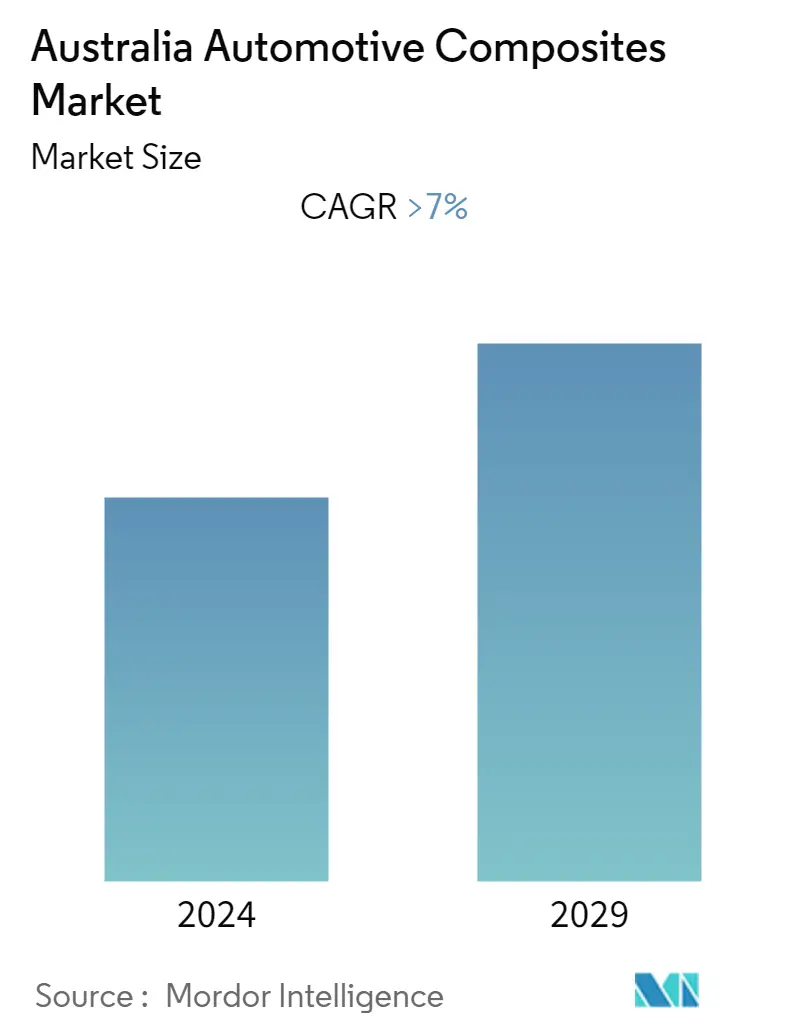
| Study Period | 2019 - 2029 |
| Base Year For Estimation | 2023 |
| Forecast Data Period | 2024 - 2029 |
| Historical Data Period | 2019 - 2022 |
| CAGR | 7.00 % |
| Market Concentration | Medium |
Major Players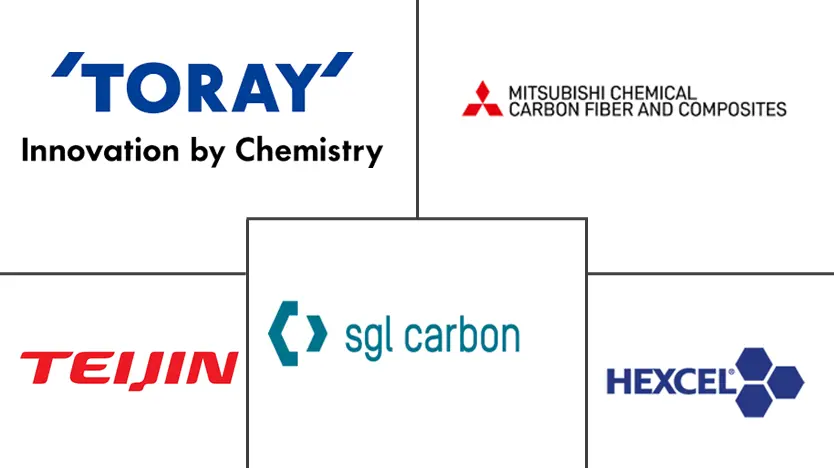
*Disclaimer: Major Players sorted in no particular order |
Australia Automotive Composites Market Analysis
The Australia Automotive Composites Market is projected to grow with a CAGR of more than 7% during the forecast period.
- Presently, composite materials, like thermoplastics and reinforced glass, have drawn the attention of carmakers, making them focus on sourcing better, tensile, and lighter components in the manufacture of automobile units.
- Factors such as increasing demand for lightweight material from the automotive industry and growing focus on fuel economy are expected to be major drivers for the market. However, high costs associated with carbon fiber composites, and glass fiber composites is hindering the growth of the market, as their usage in low-cost vehicles could drastically increase the prices of such vehicles.
- The low recyclability of composites is also a restraint for their penetration in entry-level passenger vehicles. However, collaborations of the OEMs with suppliers (due to rising demand for fuel-efficient vehicles, growing lightweight electrical vehicle segment, and major automobile giants, like BMW and Nissan, trying to replace their existing metal parts with composite fibers) imply the scope and booming opportunity that the market is anticipated to offer over the forecast period.
Australia Automotive Composites Market Trends
This section covers the major market trends shaping the Australia Automotive Composites Market according to our research experts:
Growing Demand for Lightweight Materials
The automotive industry has been focusing on vehicle weight for decades as vehicle weight have direct impact on driving dynamics and fuel consumption. Due to the high cost of potential lightweight solutions and consumers' limited willingness to pay for weight reduction in automotive, the use of costly lightweight materials has so far been limited.
As governments from around the world are implementing stringent emission regulations and even are planning to set even higher emissions standards in the coming years, the importance of lightweight materials will increase.
In a typical automobile, the use of fibers is 50% by volume, while adding just 10% to the weight. In the United States, regulations mandate that by 2025, the average fuel economy standard must meet 54.5 miles per gallon.
As per the US Department of Energy (DOE), reducing the weight of vehicles by 10% yields an increase of 6-8% in fuel economy.
As a result, companies have started using materials like carbon fiber and glass fiber composites to make vehicles lightweight and fuel-efficient.
The usage of glass fiber composites aids in reducing vehicle by 25%.
Apart from carbon fiber, automobile manufacturers have been using glass fiber composites in the manufacturing of numerous automotive components.
For instance, 2017 Mini Countryman features an interior panel carrier, uses high flow concentrate long glass fiber-reinforced polypropylene (LGFPP) material (STAMAX resin) from SABIC. The part is ~15% lighter in weight than if made from solid plastic.
With the demand for lightweight vehicles increasing rapidly in developing economies, the market for carbon fiber composites is projected to grow at a fast pace during the forecast period..
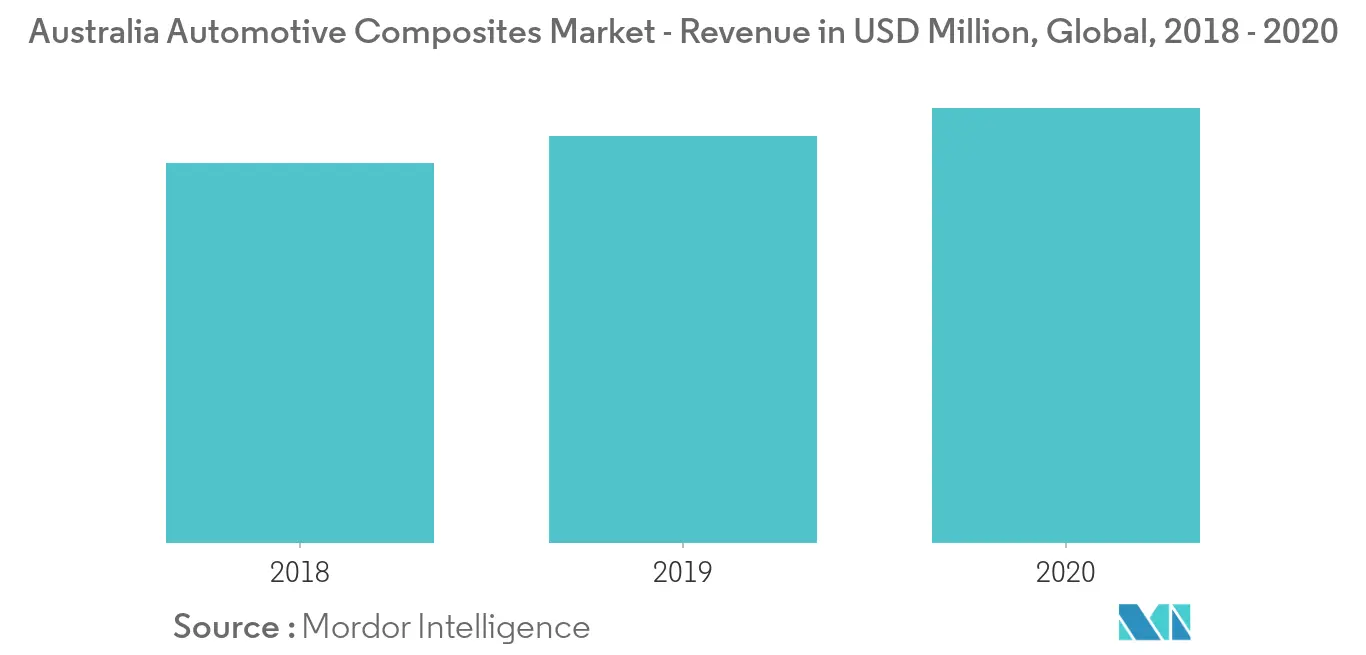
Transportation Sector to Drive the Market:
The Corporate Average Fuel Economy (CAFÉ) standard forced manufacturers in the automobile industry to develop vehicle designs that incorporated high-performance light-weight materials. The weight of an automobile has a direct impact on driving dynamics, fuel consumption, and agility. A 10% reduction in vehicle weights results in approximately 5-7% rise in fuel savings
The rising focus on minimizing carbon emission and enhancement of fuel economy, primarily by reducing the weight of a vehicle, are driving the demand for thermoplastics composites.
Continuous fiber-reinforced thermoplastic composites (CFRTP) is one of the primary materials that can address the rising concerns regarding a vehicle's weight. In combination with metals, CFRTP composites will be a part of a multi-material approach when designing
the car of the future. These materials are developed and assembled with recyclability and sustainability in mind. In addition, the automotive industry standards will serve to align methods for characterizing the performance of CFRTP composites.
The automotive industry is undergoing a major transformation. As companies explore various options to address the future needs, collaboration has proven to be an effective way to discover the new growth avenues, will leveraging risk. The preferred approach is collaboration with strategic players throughout the value chain.
For instance, DuPont Transportation and Advanced Polymers choose to advance through collaborative networks, while actively participating in consortia, including IACMI (Institute for Advanced Composites Manufacturing Innovation) and AZL (Aachen Centre for Integrative Lightweight Production), where standardization is addressed, along with collaborative teams that are focusing on demonstrating the production methods of cost-effective CFRTP composites, especially for high-volume applications
In 2019, SABIC announced a new, cutting-edge technology for producing lightweight, cost-effective, and recyclable vehicle panels, primarily by using its UDMAX tape, a unidirectional, fiber-reinforced thermoplastic composite, at JEC World 2019. This innovative technology, which has designed to replace traditional panels made of metal and thermoset material for interior and exterior automotive applications, will soon be commercialized in the bulkhead of a light commercial vehicle (LCV)
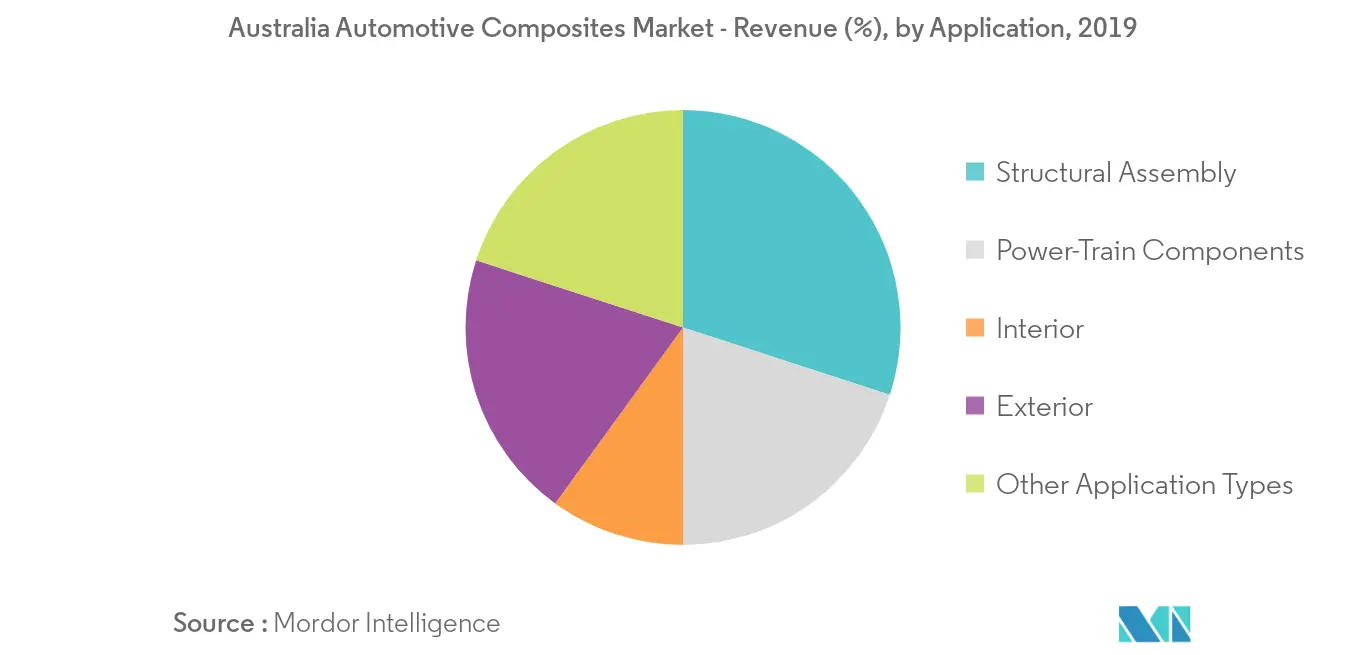
Australia Automotive Composites Industry Overview
Companies, such as Toho Tenex (Teijin Ltd), Toray Industries Inc, Mitsubishi Chemical Carbon Fiber and Composites, Inc., and SGL Carbon, are some of the major players in the market studied. Companies are trying to invent new composites that can reduce the total weight of the vehicle to much lower proportions. For instance, in December 2017, BMW celebrated the manufacturing of its 100,000th i3, which features a monocoque that is made from light and stiff, but expensive, carbon fiber-reinforced plastic (CFRP).
Not only BMW has adopted CFRP in a mixed-material approach, but its German competitor, Audi, is also using the material to produce the rear wall of the space frame for its A8 luxury sedan. This part provides around 40% of the vehicle's overall torsional rigidity, making it a suitable candidate for manufacture with CFRP. The part is around 50% lighter in weight than its metallic predecessor.
Australia Automotive Composites Market Leaders
-
Hexcel Corporation
-
Mitsubishi Chemical Carbon Fiber and Composites, Inc.
-
SGL Carbon
-
Toho Tenex (Teijin Ltd)
-
Toray Industries Inc
*Disclaimer: Major Players sorted in no particular order
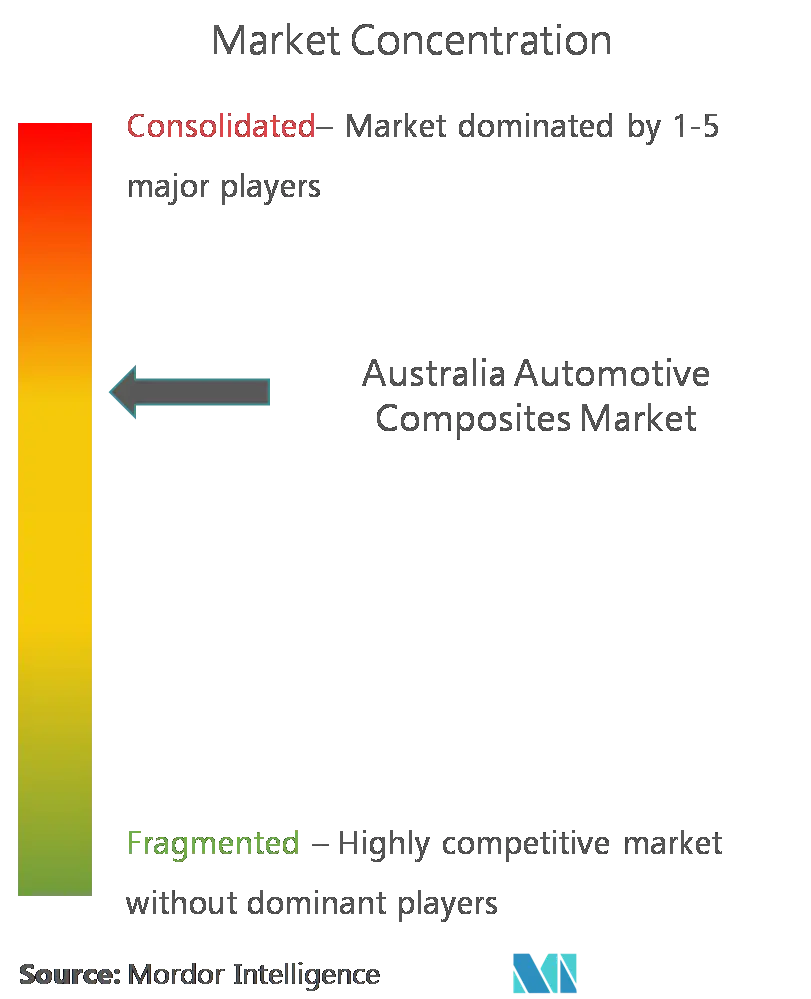
Australia Automotive Composites Market Report - Table of Contents
1. INTRODUCTION
- 1.1 Study Assumptions
- 1.2 Scope of the Study
2. RESEARCH METHODOLOGY
3. EXECUTIVE SUMMARY
4. MARKET DYNAMICS
- 4.1 Market Drivers
- 4.2 Market Restraints
-
4.3 Industry Attractiveness - Porter's Five Forces Analysis
- 4.3.1 Threat of New Entrants
- 4.3.2 Bargaining Power of Buyers/Consumers
- 4.3.3 Bargaining Power of Suppliers
- 4.3.4 Threat of Substitute Products
- 4.3.5 Intensity of Competitive Rivalry
5. MARKET SEGMENTATION
-
5.1 By Application Type
- 5.1.1 Structural Assembly
- 5.1.2 Power-train Components
- 5.1.3 Interior
- 5.1.4 Exterior
- 5.1.5 Other Application Types
-
5.2 By Process Type
- 5.2.1 Hand Layup / Manual Process
- 5.2.2 Compression Molding
- 5.2.3 Injection Molding
- 5.2.4 Continuous Process
6. COMPETITIVE LANDSCAPE
- 6.1 Vendor Market Share
-
6.2 Company Profiles
- 6.2.1 Hexcel Corporation
- 6.2.2 Mitsubishi Chemical Carbon Fiber and Composites, Inc.
- 6.2.3 mouldCAM Pty Ltd.
- 6.2.4 SGL Carbon
- 6.2.5 Toho Tenex (Teijin Ltd)
- 6.2.6 Toray Industries Inc
- 6.2.7 Nippon Sheet Glass Company, Limited
- 6.2.8 Nippon Sheet Glass Company, Limited
- 6.2.9 Sigmatex
- 6.2.10 Nippon Carbon Co., Ltd.
- 6.2.11 Solvay SA
- *List Not Exhaustive
7. MARKET OPPORTUNITIES AND FUTURE TRENDS
** Subject To AvailablityAustralia Automotive Composites Industry Segmentation
The Australia automotive composites market covers the latest trends and technological development and provides analysis on the market demand by application type, process type, material type, and market share of major automotive composite manufacturing companies across Australia.
| By Application Type | Structural Assembly |
| Power-train Components | |
| Interior | |
| Exterior | |
| Other Application Types | |
| By Process Type | Hand Layup / Manual Process |
| Compression Molding | |
| Injection Molding | |
| Continuous Process |
Australia Automotive Composites Market Research FAQs
What is the current Australia Automotive Composites Market size?
The Australia Automotive Composites Market is projected to register a CAGR of greater than 7% during the forecast period (2024-2029)
Who are the key players in Australia Automotive Composites Market?
Hexcel Corporation, Mitsubishi Chemical Carbon Fiber and Composites, Inc., SGL Carbon, Toho Tenex (Teijin Ltd) and Toray Industries Inc are the major companies operating in the Australia Automotive Composites Market.
What years does this Australia Automotive Composites Market cover?
The report covers the Australia Automotive Composites Market historical market size for years: 2019, 2020, 2021, 2022 and 2023. The report also forecasts the Australia Automotive Composites Market size for years: 2024, 2025, 2026, 2027, 2028 and 2029.
Australia Automotive Composites Industry Report
Statistics for the 2024 Australia Automotive Composites market share, size and revenue growth rate, created by Mordor Intelligence™ Industry Reports. Australia Automotive Composites analysis includes a market forecast outlook to 2029 and historical overview. Get a sample of this industry analysis as a free report PDF download.



